Vosges and Alsace 2021
Hiking in the Vosges and Exploring the Alsace region
As main holiday for the year 2021, I chose the Vosges and the Alsace region in France, because it isn't far from Freiburg and I needed a calm and relaxing holiday with spending the most of the time in the nature with hiking. I booked an apartment (Gîte du Grand Pré) in Metzeral for me and my girlfriend for one week, which was a central spot for the hiking tours and also for a one-day-trip to some of the cute cities of the Alsace. Arrived in Metzeral, the two owners of the apartment waited for us to give us the keys to the apartment, where they put a cake and self made apple juice on the table.
Directly on our first day of the vacations, we drove to the parking area of the Col de la Schlucht mountain pass at an altitude of 1.139 metres. From there, we started hiking in the direction of the Gazon du Faing, a mountain on the main ridge of the Southern Vosges, which here marks the border between the departments Haut-Rhin and Vosges. Following a trail through a beautiful forest brought us to a beautiful vantage point of the Munster Valley. The view was absolutely breathtakingly, so we got stuck for a couple of minutes before continuing the hike. The hiking trail turned into a rocky path for the rest of the way. But not only the trail conditions changed, also the view changed a lot during the hiking day. We passed a meadow with cows, listening to their special cowbell concert, and special rock formations on the top of the summits of the smaller mountains. After 8 kilometres, we arrived at the panorama viewing point of the Gazon du Faing. The view was even more fascinating with the Lac des Truites ou du Forlet. At 1.061 metres, it is the highest lake in the Vosges region and is in an old glacial cirque with steep walls. Thousand of colors around the lake from bog, steep walls, rock falls, trees and fir trees - make this lake to one of the most beautiful lakes in the Vosges mountains. After having a picnic while enjoying the view, we turned back the same way and came back to our apartment in Metzeral in the afternoon.
The next morning, we prepared our breakfast for take-away and started to hike directly from our apartment. We didn't have to hike so far, until we reached a place for a rest to enjoy breakfast with a great view over Metzeral. Well strengthened, we continued our 10 kilometres tour up to the Petit Ballon, which is part of the so-called Belchen System. The way up to the summit was exciting and diversified. At the beginning of the ascent, we went through a stony forest area followed by wide meadows full of cows. Some of the cows also strayed onto the forest path and partly blocked us to move on, so that we always had to wait to not frighten or disturb the cows. When we left the forest to continue hiking on a grass trail, we had an amazing view into the valley. Then, we reached the Ferme Auberge Rothenbrunnen and could already see the summit of the mountain, when I firstly felt pain in my left knee. After a short break, we continued the hike up to the summit at 1.272 metres, where a Mary statue and a view over the highlands waited for us. Unfortunately, the pain didn't get better, so I hobbled the way back. Luckily, two kilometres away from the apartment, it went a bit better on the not so steep descent. Nevertheless. I took a cooling pack on my knee, which helped at least to reduce the pain.
After the two hiking days, we decided to take a rest for one day, also because of my knee. It felt like, it was a good decision to treat it with care. Since it went better, I thought it was just because of the overexertion. Nevertheless, we went on a hike again on the Thursday. Our destination was the third highest summit of the Vosges mountains - the Hohneck with its 1.363 metres. We started slowly, since I wanted to check how resilient my knee is. Everything seemed to be fine, so we had a wonderful hike through the forest, while rocky paths crossed our ways too. Arrived at the Col du Schaeferthal, we could enjoy a great view of everything, that can be captured with eyes during this perfect sunny day, like the expanses and mountains with miles of views. It was absolutely impressive and not even the highlight of the day. The two peaks of the Hohneck and Petit Hohneck were in the immediate vicinity and invited us to see even more of the wild and beautiful nature of the Vosges. We had the most impressive and fanatstic panorama views from the summit of the Hohneck mountain, which also gave us the chance, to have a breathtaking panorama view with the Lac du Schiessrothried, a lake of glacial origin, glittering in the sun. As lunch, we enjoyed a picnic again, before finishing our round tour hiking trip. We found a path, which looked like a shortcut through the Wormsa Valley. The path was probably shorter, but nevertheless much more difficult than expected. We had to hike along steep stone paths and sometimes had to climb down small stone edges. The higlight was climbing down a wet and muddy, but basically drained waterfall section, until we reached the Lac de Fischboedle, one of the smallest lakes in the Vosges mountains. From there, the rest of the hiking section was luckily easier, but unfortunately, I got pain again on my left knee, so that we decided to drive to Colmar in the afternoon to visit the hospital, where the doctor said, that I might got a patellar tendon tear, which should be checked in Germany again.
After another day of rest, also because of rain, we decided, that it wouldn't be a good idea to risk another hiking trip. So we made a relaxed and calm tour through the Alsace, visiting Colmar, Kaysersberg and Riquewihr. We started our tour in Colmar, the third-largest commune in Alsace, located on the Alsatian Wine Route. Colmar considers itself to be the "capital of Alsatian wine" and it's famous for its well-preserved architectural heritage spanning six centuries. An area that is crossed by canals of the river Lauch - which formerly served as the butcher's, tanner's and fishmonger's quarter - is now called Little Venice. It's the most touristy area in Colmar, starting behind the Koïfhus, going through the fishmonger's district and to the bridges Turenne and Saint-Pierre. The view from the bridges wasvery charming and beautiful with the half-timbered houses, the colorful flowers and the cute little shops, especially around the fishmonger's district (Quai de la Poissonnerie). In this street, we bought some souvenirs and special Alsatian wine. In the Market Hall, we also bought some delicious cookies, before we made a lunch break, eating Tarte Flambée in a romantic ambience.
We continued our Alsace tour in Kaysersberg, the birthplace of Nobel Prize winner Albert Schweitzer. Even from afar we could already see the castle ruins of the Château de Kaysersberg in the vineyards. The castle was built around 1220, but nowadays, only the castle keep and remains of the curtain wall, which is linked to the town's fortifications, are preserved. We went up the steps of the tower to enjoy the view over the city, the vineyards and the surrounding mountains and forests, before we went down to the medieval city centre to explore the beautiful half-timbered houses. On many houses, high masts and churches, it was possible to see stork nests and sitting storks. That also explained, why the stork is a symbol of the city. Kaysersberg, which was voted as "Village favoured by the French" in 2017, had many sights to offer - for example the Renaissance style town hall or the old city fortifications, including two towers. But the main sights were the richly decorated half-timbered houses, which are well worth seeing. In Kaysersberg, we also bought more souvenirs - an Alsatian whiskey from Kaysersberg and Munster cheese.
Through the vineyards of the Alsace, we drove from Kaysersberg to Riquewihr, our final destination on our Alsace tour. Between the peaks of the Vosges and the Alsatian lowlands, the medieval settlement of Riquewihr lies in the heart of the Alsatian wine region and is classified as one of the "most beautiful villages in France". For centuries, this beautiful city has known how to combine the value of its architecture and the quality of its famous wines, hence its name "Pearl of the Alsatian wine region". Even if Riquewihr was the smallest city, we visited, the decoration with flowers gave the city a unique atmosphere. We walked through the cobbled streets and enjoyed the beautiful colors of the medieval houses and the preserved city walls. We also bought another bottle of wine - a Riesling, which is produced in Riquewihr. We had such a wonderful day, exploring the cute Alsatian cities, so that I almost forgot my pain in my left knee. But something unexpected happened, when we were back in Metzeral in our apartment. On the evening of our last night during the short vacation, we suddenly felt a small earthquake. This was definitely an odd experience as neither of us had experienced this before.




















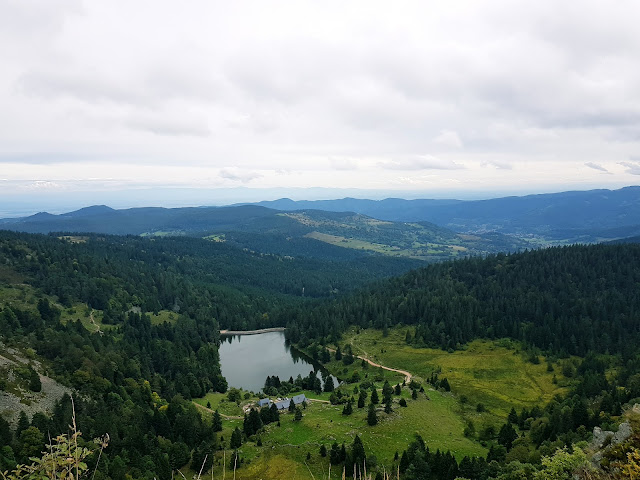





















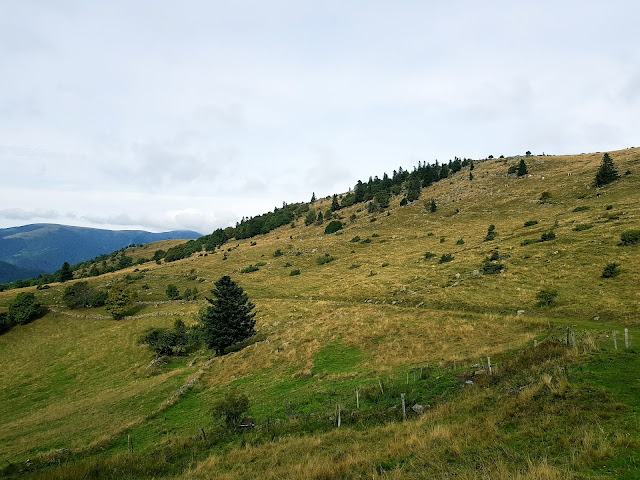


























































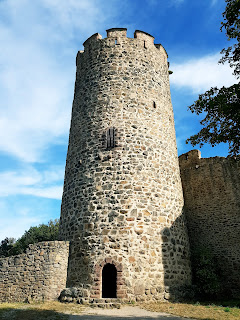














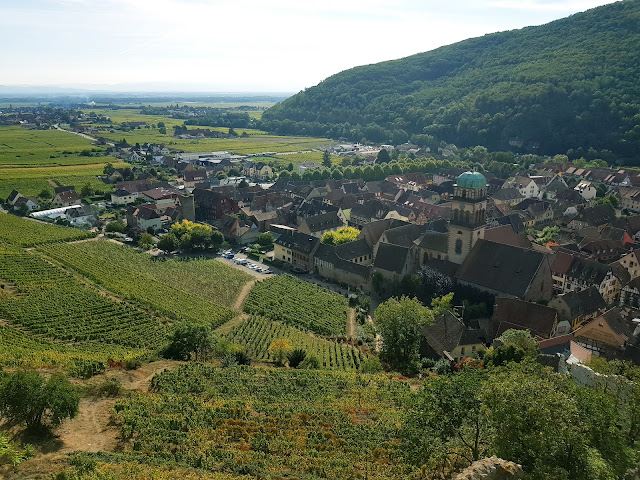
















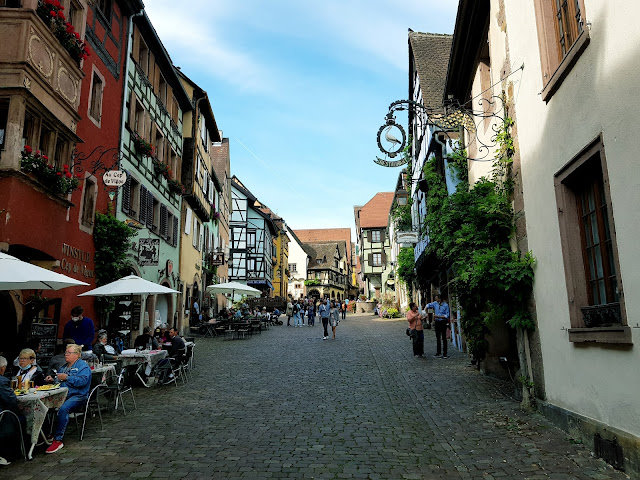















Comments
Post a Comment